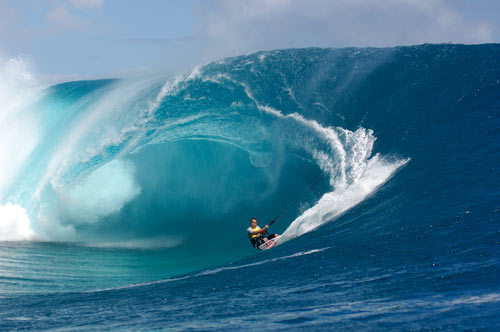VIA – REGISTER GUARD
Kite surfing set for Olympic debut
The kite board has replaced windsurfing, and not everyone’s happy
By Samantha Storey
The New York Times
Published: (Thursday, Jul 12, 2012 11:50AM) Today
On July 1, the British entrepreneur Richard Branson, 61, became the oldest person to kite surf across the English Channel. Two weeks earlier, the inventor of the windsurfer, Jim Drake, 83, died. The timing is somewhat poetic.
The International Sailing Federation, the sport’s global governing body, voted in May to drop windsurfing as an Olympic sport for the 2016 Summer Games in Rio de Janeiro and replace it with kite surfing, or kite boarding as it is also known.
It was a close vote, and the decision infuriated the windsurfing community, whose sport has been part of the Olympics for almost three decades.
Kite boarding, by contrast, is in its infancy, having had its first world championship only three years ago.
More than 27,000 windsurfing devotees have signed a petition on Change.org, a social awareness site, encouraging the federation to overturn the vote when it convenes in November.
Nevin Sayre is both a windsurfer and kite boarder. “Kite surfing has definitely been coming onto the scene,” Sayre, 52, said. “If you go to beaches, you will see more and more kite surfing, and in some locations you’ll see a lot of it.”
In the simplest terms, both sports harness the wind to move the sailor across the water on a flat board that has no rudder or tiller. But that is where the similarities end.
Equipment
Kite boarding: Ever seen a trick kite at the park? Kite surfing is similar. There is a C-shaped kite that is inflated before the action starts, a board the surfer straps into after entering the water, a harness worn by the surfer to which the kite hooks onto, about 25 meters of line between the surfer and the kite, and a control bar to steer.
Windsurfing: Windsurfers are essentially one piece with a universal joint that connects the rig to the board. The rig is made up of a mast, a wishbone boom and a sail. The sailor stands on the board, holds on to the boom and away he goes.
Cost
Kiteboarding: $1,000-$3,000
Windsurfing: $500-$2,500
Difficulty
Kite boarding: Putting on the brakes is complicated, so crashing is not uncommon. You have to let go of the control bar and unhook the kite from the harness to stop. This means kite surfing should be done where there are no rocks, trees, beach houses and swimmers. Otherwise the risk of collision is high, especially for beginners.
Windsurfing: To stop, a windsurfer can simply let go of the boom and the sail will drop.
Injury danger
Kite boarding: Crashes are more frequent in kite boarding, and the wipeouts can be spectacular, with surfers being dragged along the beach at 30 miles an hour or cut by the lines connecting the kite.
Windsurfing: Severe injuries are less common.
http://www.registerguard.com/web/sports/28374129-41/kite-windsurfing-boarding-surfing-board.html.csp
 Become A Sponsor!
Become A Sponsor!If you have a product or service that is a good fit for our surf community, we have opportunities for you to sponsor this blog! Download our media kit now!

